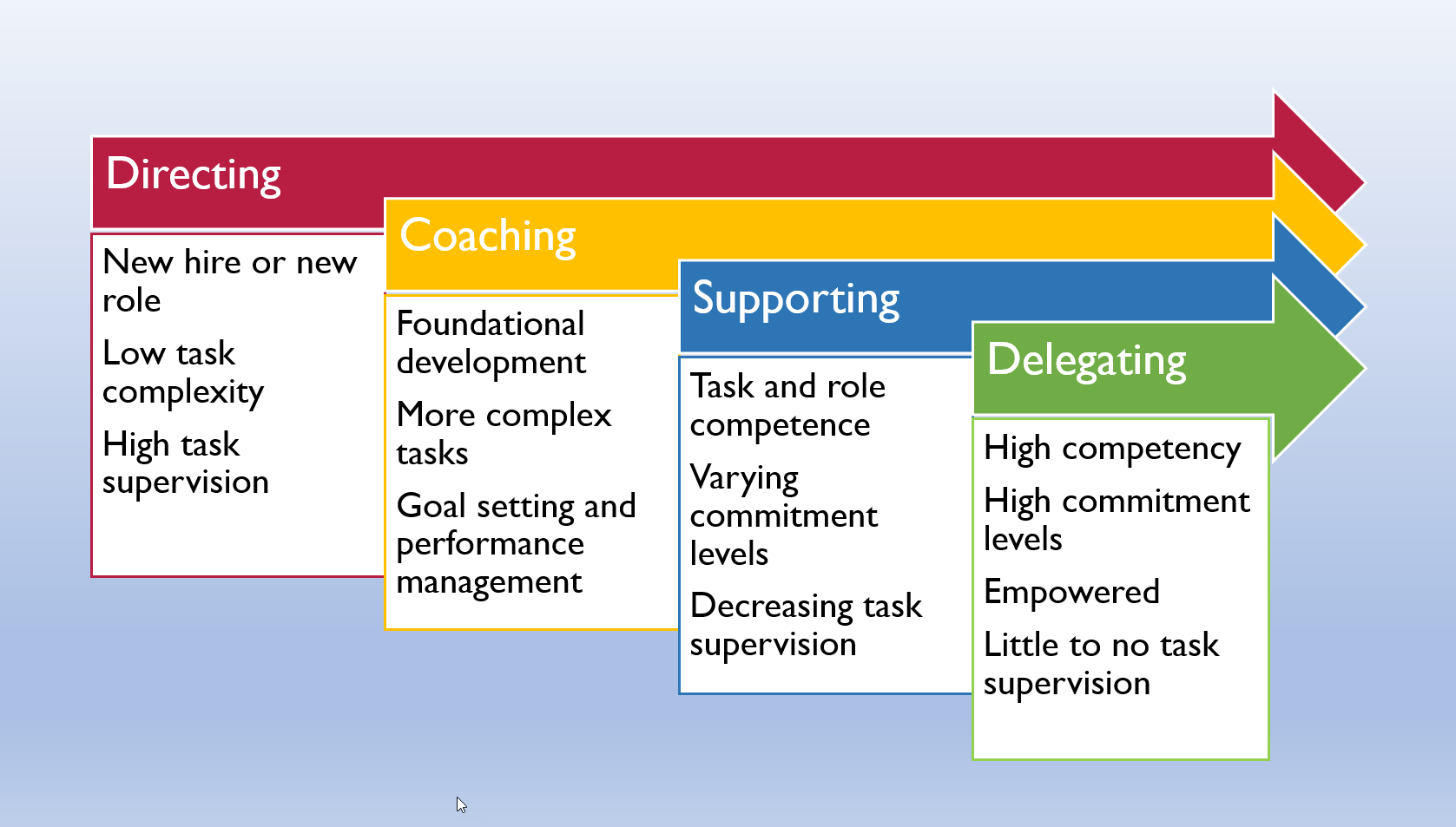Blog Posts
 November 05, 20256 Characteristics of Situational Leaders
November 05, 20256 Characteristics of Situational LeadersBy Dr. Scott.
In a previous, six-part series, we highlighted visionary leadership, the characteristics of visionary leaders, and various applications for visionary leadership best practices. If you are unfamiliar with that series, I recommend beginning with the 6 Characteristics of Visionary Leaders.
Here’s the full series: 6 Characteristics of Visionary Leaders, Strategic Innovation and Inspirational Communication, Visionary Leaders and the Situation, Visionary Leaders and Personality Traits, Building Visionary Cultures, Maintaining the Vision, and Seeing Out the Vision.
In that series, we explored visionary leadership, but we also emphasized the importance of learning situational leadership skills and applications, even for accomplished visionary leaders. A follow-up series on situational leadership, then, is probably long overdue.
Following in the footsteps of that earlier series, we begin a short series pertaining to situational leadership with 6 key characteristics of effective situational leaders coupled with some recommendations for applying these characteristics in your own leadership activities.
To begin, though, we need to first understand what situational leadership is and why it is important. Situational leadership comes from a theory first put forward by Ken Blanchard and Paul Hersey in the 1960s and in Management of Organizational Behavior which they first published in 1970. The theory and the models that followed emphasize a leader’s need to alter their leadership style to align with the follower, the task, or the situation. In other words, and as Kat Boogaard of the Atlassian asserted, “lead how they need.”
To be clear up front, situational leadership is far more complex than just leaders remaining flexible and we’ll explore situational leadership models and their applications in greater detail later in this series. For now, we’ll begin with the 6 main characteristics of effective situational leaders and build from there. Situational leaders are: adaptable, openminded, self-aware, thoughtful, active listeners, and coaches and mentors.
Adaptable
Almost by way of a definition, situational leaders must be highly adaptable to different situations. While situational leadership is a structured approach that we’ll examine later in the series, in general, effective situational leaders must constantly adapt their leadership and communication styles to align with the follower, the task, and the situation. Situational leaders must also navigate a constantly changing and evolving landscape of relationships, decisions, and daily activities.
For most of us, then, mastering adaptability may be our greatest situational leadership challenge. While there are many ways for to improve in the area of adaptability, for situational leaders, adaptability is often the culmination of, or perhaps the byproduct of. the other key characteristics highlighted below. So, while we can become more adaptable through things like self-reflection, professional development, and practice, we can also improve our adaptability by seeking to master other key situational leadership skills such as keeping an open mind, becoming more self-aware and more thoughtful, improving active listening skills, and mastering coaching techniques.
Openminded
To effectively apply situational leadership skills, individuals must remain openminded. This includes remaining open to multiple ideas and points of view while also constantly seeking to learn new things and explore new challenges. Situational leaders know the value of learning a new skill, taking up a new hobby, conquering a tough challenge, or constructively facing a fear. Situational leaders are also inquisitive and openminded. They ask questions and aren’t afraid of being wrong . More importantly, effective situational leaders often encourage others to be more openminded and to embrace new perspectives.
Becoming more openminded involves becoming more self-aware of our own thought process, biases, and emotions.
Self-Aware
Effective situational leaders are typically calm, reassuring individuals who seem to confidently and effortlessly command a situation or a meeting. For some, this may no doubt come somewhat naturally, but for most, what we are seeing in the behaviors of these individuals stems from practice, from honing their self-awareness, and from learning to master their emotions and reactions.
To become more self-aware, we must learn to be more mindful of our surroundings and more thoughtful of our actions and reactions.
Thoughtful
Leaders in general, but situational leaders specifically, must reflect and spend time assessing their leadership, the needs of their individual followers, and goals and objectives of the organizational as a whole. Truth be told, that’s a lot to think about all the time and this is why effective situational leaders excel at thoughtfulness and reflection.
I should note too, though, that thoughtfulness is more than professional development and goal achievement. Thoughtfulness is also used to develop meaningful and productive relationships, to build strong team and organizational cultures, and to maximize leadership influence and impact.
Here again, becoming more self-aware and more thoughtful, allows us to more effectively develop other key situational leadership skills and characteristics such as active listening.
Active Listeners
If you are a regular follower of this blog, then it should come as little or no surprise that active listening skills makes this list. To be a situational leader, we must constantly apply active listening skills. And, like communication skills in general, active listening skills are improved through constant use and improvement. Learning active listening skills such as culturally appropriate eye contact, non-verbal and verbal affirmations, summarizing, and asking leading questions are all key skills that effective situational leaders must master and employ.
To effectively apply situational leadership models, leaders must listen and evaluate. And, as we saw above, leaders must remain flexible and meet their followers where they are. Beyond just active listening, though, this takes coaching and mentoring skills.
Coaches and Mentors
To be effective, situational leaders must be excellent coaches and mentors. Whereas visionary leaders typically inspire us to improve and perform at our very best, situational leaders must actively develop our skills and performance levels, improving everyone and the organization collectively. To accomplish this, situational leaders need to know when to coach, when to mentor, and, perhaps more importantly, when to step away.
To become better coaches and mentors, the best practice across industries is to invest in professional coaching services like those offered here through the Madison Education Group and the Madison Coaching Academy.
For aspiring or improving situational leaders, though, becoming a certified professional coach can greatly enhance your skills, your leadership, and your overall impact. The Madison Coaching Academy is currently running and end of year scholarship event. Learn more about how you can launch your professional coaching career at a fraction of the cost, now through January 15, 2026.
Final Thoughts
In this blog, we set the stage for a short series on situational leadership. Using our earlier series on visionary leadership as our guide, we began this series with a focus on the key characteristics of situational leaders. As we’ll see later in this series, situational leadership is often best thought of as a process in which leaders constantly assess and reassess follower capabilities, task or job difficulty levels, and the context to gradually alter their leadership style from personally directing team members all the way through to delegating key tasks with little or no needed direction. Again, more on this in coming weeks. Next week, we’ll examine the Situational Leadership Model in more detail and explore ways to apply these leadership skills in your own career.
Thank you for reading the Madison School of Professional Development Wednesday Leadership Blog where we highlight leadership best practices each week. Check out more from this blog and other blogs hosted by MEG here.
If you have a topic that you would like to see me pontificate on, drop me an email at info@meg-spd.com.
Dr. Scott Eidson is the Executive Vice President of the Madison School of Professional Development and holds doctoral degrees in both history and business. When not thinking about leadership, he’s usually thinking about surfing or old Volkswagens.
 November 10, 2025MCA Announces 2025 Scholarship Offer
November 10, 2025MCA Announces 2025 Scholarship Offer November 13, 2025The Situational Leadership Model
November 13, 2025The Situational Leadership Model